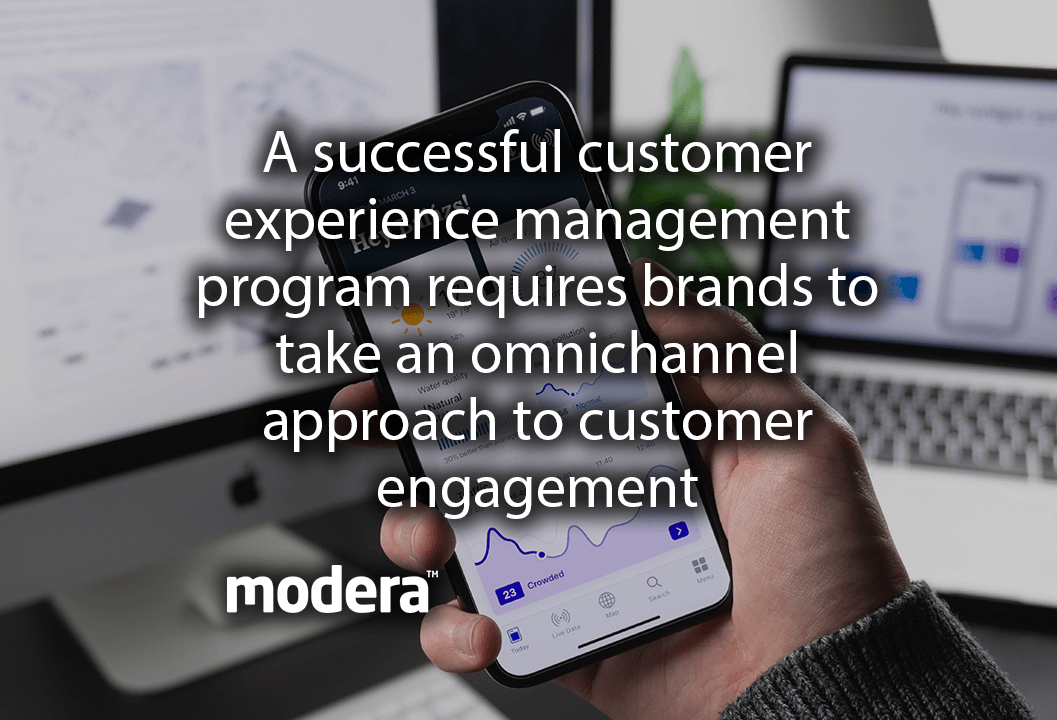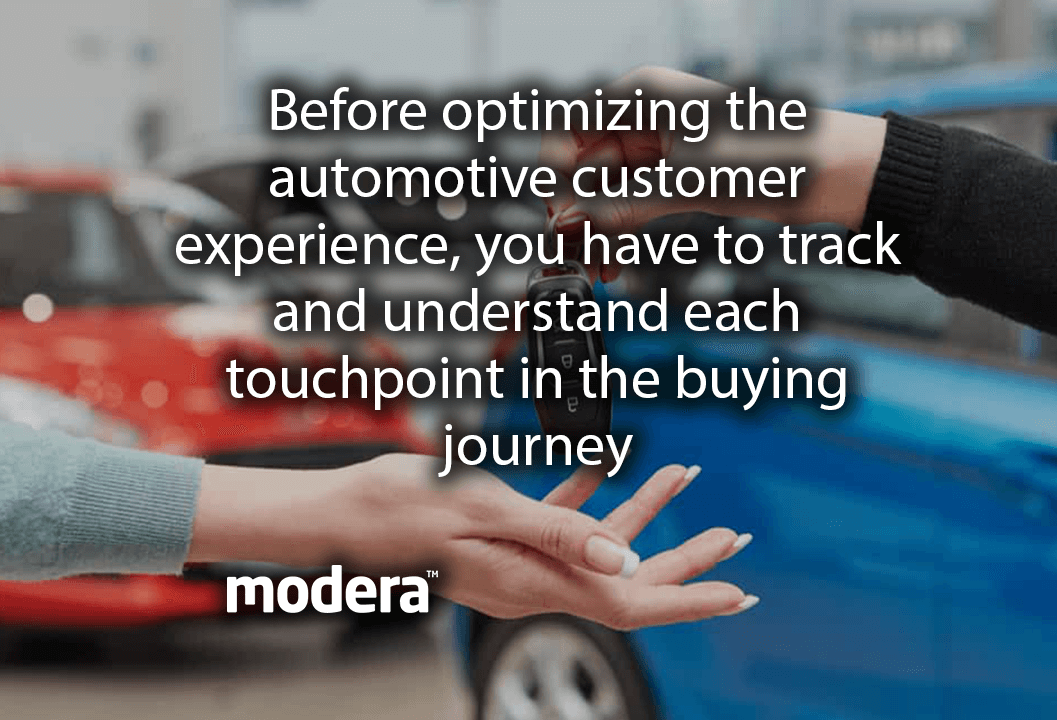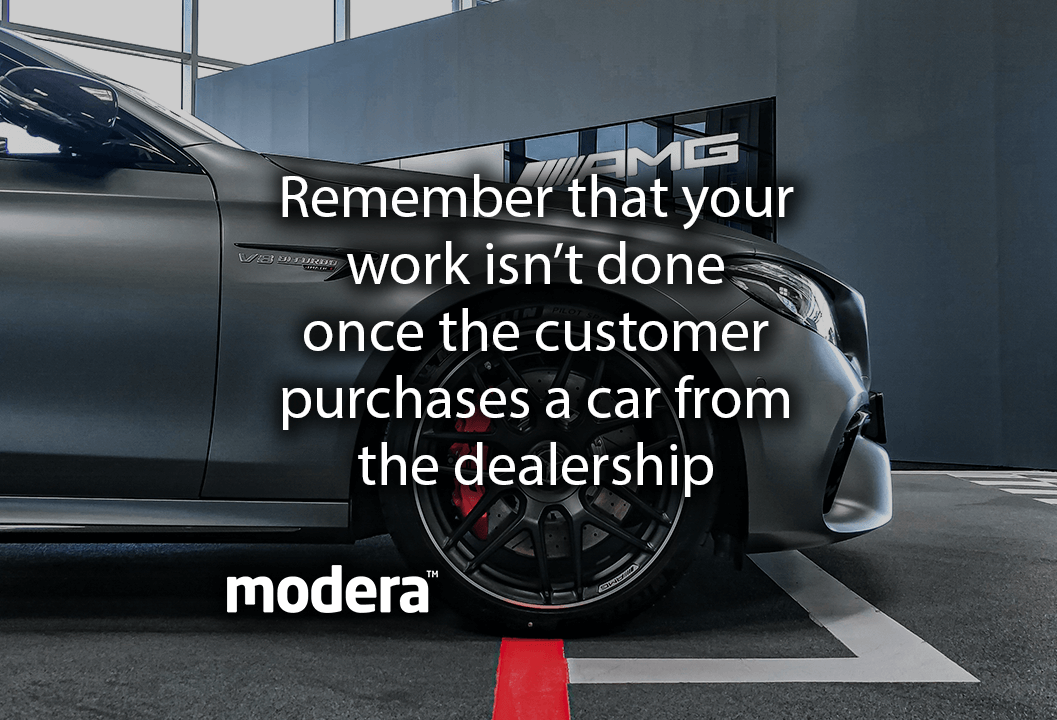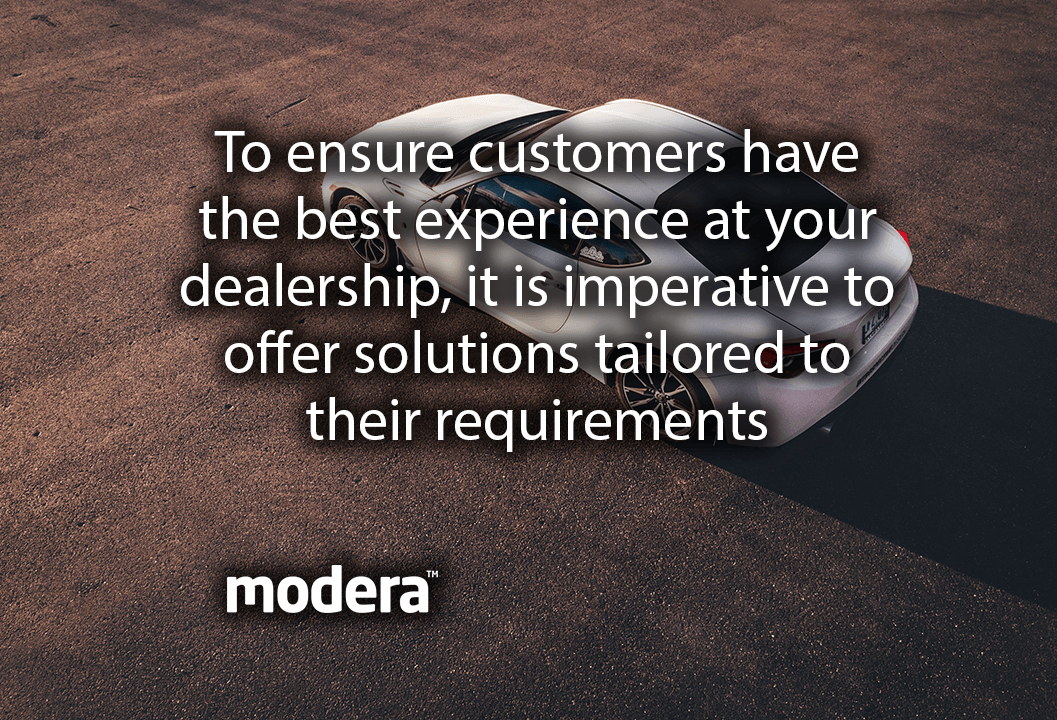
Getting a new (or used) vehicle isn’t something customers do on a whim! It is a huge decision on a big-ticket item that they will invest their hard-earned money in. So it is natural for customers to be concerned about getting it right. That, combined with the expansion of digital resources, has led to customer journeys that are complex, packed with litany of review sites and personal research. It only means that buyers are better informed than ever before. That is why, you have to provide an excellent customer service. Aka customer experience management or they won’t step into your dealership. If they are unsatisfied, they will simply leave.
Your customer is changing!
Before tackling any user experience strategy, you need to know your customer. Partly due to the introduction of technology into practically every area of our daily lives, there is no doubt that we find ourselves in a constantly changing environment. The profile and needs of your customers are no exception.
There is a new digital customer who is very well informed, active across multiple channels, and demanding. They have the ability to influence other consumers using the Internet and social media. This new customer demands special attention and a highly satisfying experience. If you manage to win them over, meet and exceed their expectations. Even surprise them, then you have a very important voice in the “word-of-mouth” system. Moreover, another change is that the image the brand sells it is not particularly important to customers anymore when it comes to making a purchase decision. What is more important to them is the opinion of other consumers with similar tastes. And that extends to the automotive industry as well.
Why does customer experience management in the automotive Industry matters?
While autonomous vehicles, connectivity, electrification, and shared mobility (ACES) will ultimately compel fundamental changes across any OEM’s business model, its customer experience performance must advance to reflect these changes as they occur. Current numbers from various industry sources suggests that millennials will represent more than 45% of the potential car-buying cohort in 2025. They will thereby form the largest new-car-purchasing demographic, making it paramount that OEMs understand their preferences and adapt to them. Over the next five to ten years, dealerships and OEMs need to look beyond the automotive industry to anticipate the needs of this first generation of integrated-mobility customers.
A good place to start looking for inspiration is the consumer-tech sector, where companies such as Airbnb, Amazon, and Uber keep raising the bar on what a best-in-class digital customer experience looks like. Today, it includes a seamless and reliable service, competent advisory functions, personalized omnichannel communication, 24/7 support, and relevant social-media marketing.
Success in the automotive industry was traditionally seen as a consequence of a superior product. But that is no longer the case, as product hasn’t remained the main differentiator – it is customer service that matters. Several factors have contributed to this shift, such as:
- The switch to a digital customer journey, especially during the Covid-19 pandemic.
- Environmental concerns.
- The move towards more flexible ownership models.
- New finance products.
- Advanced technology in cars.

However, the automotive industry is lagging behind. When the digital researching journey ends and customers walk into a dealership, the buyer journey is impacted by archaic sales techniques, vast swathes of paperwork, and a rigidity of approach that wastes time. This is where customer experience management comes in handy.
So what are the benefits of customer experience management in automotive industry ?
With the proper design and implementation, an improved user experience can have great impact on your business and organization. But there is a thought you should pay attention to – is it worth allocating time and resources to ensuring customers have a good experience? Or in other words, why should you apply techniques that improve the customer’s experience? Let us find out:
1. Better shelf life of customer
Also known as customer lifetime value, it indicates the total amount of money a customer will spend with a business on products or services over a lifetime. This number lets brands determine how much to invest in retaining customers versus acquiring new customers. However, the real benefit of customer experience management is the ability to ensure the number goes up. Repeat business represents customer loyalty to a brand, while highlighting quality of a company’s products. Companies roll out rewards programs, communicate often with customers and invest in customer service and support to increase customer conversions. The more the customer spends with a business, the higher are the profits.
2. Minimized customer churn
Some businesses are seeing a higher customer lifetime value thanks to a good customer experience management program. And they are likely benefitting from reduced churn or customer turnover.
It is more costly to acquire new customers than to retain them. So by putting resources toward keeping customers happy, companies will experience longer engagement. Using regular touchpoints, such as frequent phone calls, updates or customer appreciation events and sales, a brand is likely to stay at the top of a customer’s mind. When the time has come to make another purchase or renew a contract, those customers have an easier decision to make if customer service representatives have been attentive to their needs or wants over time.
3. Better engagement with customers
A successful customer experience management program requires brands to take an omnichannel approach to customer engagement. Customer experience teams have to determine exactly where customers are interacting. Once that is established, they have to go where they interact most frequently. It could be through social media, email or phone. Companies have to be responsive and proactive by frequently checking in, understanding needs and rewarding loyalty. That will result in those return interactions from the customers.
4. Improved brand equity
Brand equity is a marketing term that typically describes a brand’s value in the eyes of the consumer. Brand equity, however, has more to do with the emotions a consumer has when thinking about a brand. Delivering on promises, providing high quality products and services and being responsive are all ways to build positive brand equity. Conversely, under-delivery, disappointing interactions and massive public declaration to avoid a brand are all examples of developing negative brand equity. A company with positive brand equity has some big fans. These customers are happy to post their positive reviews. Share their experiences through word of mouth referrals and even participate in other customer loyalty programs. An effective customer experience management plan can influence a positive brand equity and prevent negative reviews.

5. Decreased costs of service and marketing
When companies adopt a customer-centric approach to marketing, they eradicate a lot of guesswork regarding what customers want. When it comes to customer experience management in automotive industry, it requires teams to look at customers in their own light. And decide what products they bought, and what they will buy next. They have to learnlessons through the sales process and understand why customers are reaching out. Teams can use this data to be more proactive and potentially anticipate the needs of the customer.
6. Better rate of customer retention
Brands that experience higher brand equity and reduced churn will also experience higher customer retention. High customer retention often correlates to high customer loyalty. A customer may buy from a brand once every few years, but the ability to keep that person as a customer is important. Companies that are quick to resolve issues, reward loyalty, stay in touch… And most importantly, thank their customers, will strengthen the positive perception that is at the root of the overall customer experience. Customer retention leads to more sales and higher lifetime value. And an easier way to increase ROI from that initial conversion.
How can customer experience management be improved in the automotive industry?
The automotive buying journey is evolving swiftly as car buyers spend more time doing due diligence before actually visiting a dealership. According to research, buyers in 2022 spend an average of 7 months researching their options, as compared to 2.7 months in 2017. This trend also holds true for service centers, as today’s consumers spend more time checking online reviews and price shopping.
The writing on the wall is clear. If customers don’t get information up front, or their questions aren’t answered properly via chat, text, email, phone calls, or whatever channel, they won’t come in. Don’t show your cards – risk losing customers. To cater to today’s automotive consumer, dealerships and service centers have to start with high customer experience management to provide top-notch customer service not just at brick-and-mortar locations, but also in the online and phone call experience. If you don’t create a seamless buying journey for your customers across all channels, it won’t take them even a minute to switch to your competitors.

1) Understand important moments in the journey
Before optimizing the automotive customer experience, you have to track and understand each touchpoint in the buying journey. Nowadays, most dealerships measure the online experience with web analytics tools. It helps to monitor how many of their customers ultimately take a test drive. Or schedule maintenance, or finance a vehicle at their brick-and-mortar locations. But one of the key moments in the buying journey has a glaring gap – the phone call experience.
As per a 2022 Buyer Experience Report study, 67% of automotive consumers will call during their buying journey. If your dealership doesn’t capture analytics from phone calls, then the customer journey analytics has a major blind spot. You have to invest in software that tracks the full digital-to-call experience. And understand which marketing campaigns, channels, keywords, and webpages are driving the most calls to your locations.

This type of software uses AI to gather insights from phone conversations. Such as each caller’s product or service interests, if they were a quality lead, and if they scheduled an appointment. The AI can be used to automate call quality assurance to ensure that you personnel are providing top-notch service. The data gathered can enrich existing workflows. It helps to understand calls are impacting customer acquisition as well as if there are any customer experience issues you need to address to improve your conversion rates.
2) Always invest in omnichannel marketing
As mentioned, the average car buyer spends more than half a year to research their purchase. Thus, they are likely to engage with you on multiple channels and devices before actually visiting your dealership. As your leads bounce between different touchpoints, you should keep them warm with marketing campaigns. It is important that when you market to prospects, you create a consistent experience across all channels. If ads aren’t tailored as per their latest interaction with your dealership, the experience feels disjointed, so the customer is less likely to convert.
To do this, you should create audiences based on your website visitors. And segment them by which vehicle pages they visited. You should also create audiences based on which advertising offers consumers engaged with. This will allow you to market to your online audience based on their previous interactions.
Moreover, you should connect each lead’s digital interactions to their call interactions. With the right software, you can capture insights from phone calls at scale. Such as the cars the caller is interested in, the features they mentioned on the phone, and any other purchase considerations they have. You can then use this data to create new audiences that you can feed into your advertising platforms. As a result, you can create seamless experiences on every channel. Connecting the digital-to-call experience can be a key differentiator for your dealership, setting your customer experience management apart from the competition.
3) Build long-lasting customer relationships
Remember that your work isn’t done once the customer purchases a car from the dealership. Or not even then he/she gets repairs done at the service center. In fact, it is just the beginning in customer experience management in automotive industry. To provide a truly stellar customer experience, you need to forge long-lasting bonds with your customers. It means remembering their preferences and customizing every future interaction to meet their requirements.

To do this, your dealership should use a CRM like Modera Salesfront. It allows you to capture customer information from past engagements. Using this information, you can use it for future ad targeting, email campaigns, and phone call outreach. But if you don’t feed data from every touchpoint into your CRM, your customer records will be incomplete. As a result, your subsequent interactions with them may feel disjointed. For instance, companies often target customers with ads for a product they have already bought, which makes no sense at all.
To avoid such experiences, it is imperative to keep the CRM updates with conversation insights from phone calls. Including the customer’s product or service interest, barriers to purchase, if they ultimately scheduled and appointment or test drive, and more. Thus all data is captured in the CRM and future interactions with customers are hassle-free. For example, if a prospect called about a specific vehicle but ultimately didn’t buy it, you could retarget them with future ads. Or email campaigns about that car, especially when there are upcoming sales events or financing options. Thus customers feel valued, and it goes a long way to earn their loyalty.

4) Feedback from customers is of the utmost importance
Honing the customer experience is an ongoing process. It requires constant tweaking and refining. If you don’t continuously innovate, you risk falling behind. And this is ultimately detrimental to your revenue, as experience is one of the most important differentiators for automotive customers.
To get insights about where they excel and where they fall short, leading automotive dealers and service centers use satisfaction surveys. These provide a forum for customers to share their experiences in depth. Here are a few tips to make the survey process as successful as possible:
- Use an adequate sample size.
- Send the survey at the right customer touchpoints.
- Ask only questions that fulfill your end goals.
- Avoid leading and loaded questions – don’t be too pushy.
- Make use of rating scales and yes/no questions to make the survey easier to complete.
- Start the survey with your easy “warm up” questions.
- Offer a reward or bonus to increase survey participation.
With the data and information from these surveys, you can successfully determine exactly where you are going wrong. Or which areas need improvement, and what you are doing right.
Customer experience management in automotive industry is easy
Investing in customer experience management means “taking it personally:” starting from the knowledge of one’s target – as accurately as possible. The purpose is to create the conditions necessary to provide a product or service capable of satisfying specific needs and increasingly high expectations.
Understanding who customers are and what they need is now easier. All thanks to the enormous amount of information that flows to the company through its channels. To ensure customers have the best experience at your dealership, it is imperative to offer solutions tailored to their requirements. In the automotive industry, building an effective brand experience means creating consistent and cohesive paths across digital touchpoints throughout the entire customer journey. So, it is time to properly study consumers!
It is vital to analyze their buying habits and patterns. And strive to understand their needs and difficulties, and tune in to what they want!


